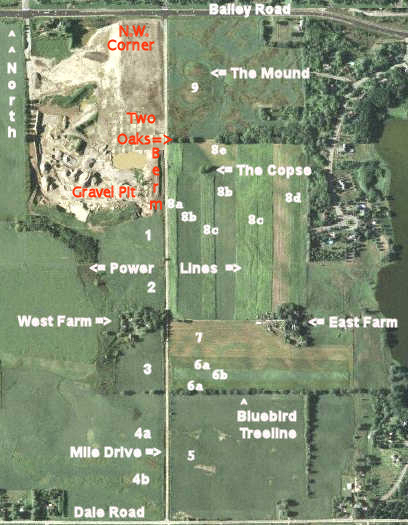
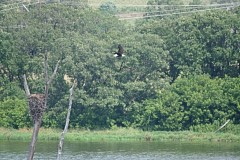 I walked across the field to see the progress of the young eagles. Here one of the parents
flys from the nesting trees. The eaglets are no longer in the nest.
I walked across the field to see the progress of the young eagles. Here one of the parents
flys from the nesting trees. The eaglets are no longer in the nest.
|
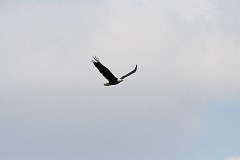 A hill above the nest gives me the chance to take pictures at a higher elevation, so
I actually get some shots from level and from above the birds.
A hill above the nest gives me the chance to take pictures at a higher elevation, so
I actually get some shots from level and from above the birds.
|
|
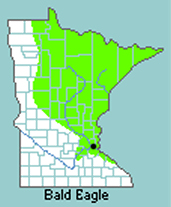
The range of the American Bald Eagle. The dot indicates where Mile Drive is.
|
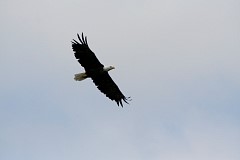
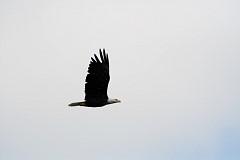
The eagle slowly circles to check me out.
I don't crop any of these pictures because I want to keep the feeling of distance and
perspective. Eagles can live for thirty years. Males weigh about 9 pounds while
the larger female can weigh 10-14 pounds. Mature eagles have wingspans of 6 to 7 1/2
feet.
Return to Birds
|
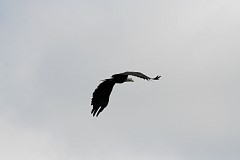
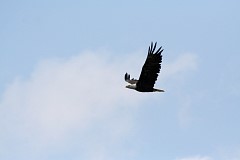
I am sure I could have had better camera settings, but these still are not bad.
|
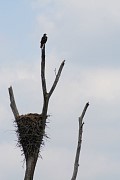
An eaglet flies in from across the lake and perches on the nesting tree. I only saw this one
eaglet, not the two I observed earlier in the year. Approximately 40% of young eagles do not
survive their first flight. In the year 2006 this nesting pair is one of approximately
9,789 nesting pairs living in the U.S. Minnesota has the most nesting pairs - 1,312.
In 1963, there were only 417 breeding pairs of bald eagles.
|
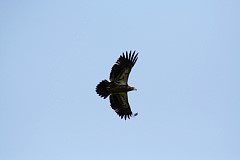
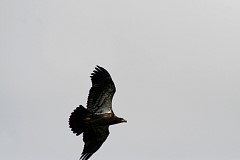
The immature bald eagle have white mottled into their coloration,
and they have the yellow beak of the adult. The distinct juvenile pattern, signaling
that a bird is not ready to breed, may reduce aggression from territorial adults.
Eagles don't get their distinct white feathers until age four or five.
Return to Birds
|
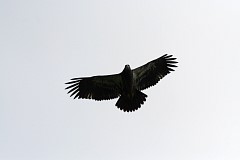
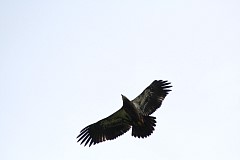
The young eagle stays near the nest, practicing its abilities to fly and to hunt. The parents
cannot tell juveniles how to hunt, they have to learn by watching the parents and by practicing.
During this time they seem to spend more time looking at prey than they do actually attacking it.
Over the next month, they meet with their parents to be fed, but have little other contact
with them. They learn to soar and to spot prey.
Six to nine weeks after flying for the first time, juvenile eagles leave the nesting area.
|
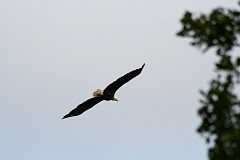

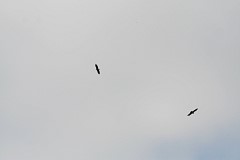 The parent and offspring continued to whirl around me, with each turn getting further
away and gaining altitude. Finally
they disappeared into the distance.
The parent and offspring continued to whirl around me, with each turn getting further
away and gaining altitude. Finally
they disappeared into the distance.
|